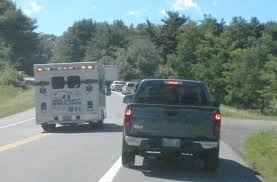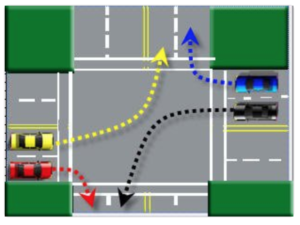People injured in car accidents in Seattle may think twice before hiring a Seattle personal injury because they believe it will take too long to settle their case if they hire a lawyer. This could not be further from the truth.
Seattle car accident injury lawyers will not try to settle your case until you are fully healed or until they approach the statute of limitations if you have not fully healed by then. The reason for this is because you do not want to try to settle your case until your injuries are fully healed in order to fully know the amount of cost of your treatment.
People will some times try to settle their own case without a Seattle personal injury lawyer before their injuries are fully healed because they are pressured by the insurance company to settle their car accident injury case early. They will also do so because they believe that they are a good negotiator and know how much money they want in their pocket. However, if you settle before you get all your treatment, you may be surprised on how much the treatment you need to get you better is going to cost you out of pocket. This could leave you with nothing in your pocket after you pay for everything out of the settlement if you try to settle your case before your injuries are fully healed.
A Seattle personal injury lawyer will be able to make sure all of your treatment is paid for before trying to settle your case or at least know how much your out of pocket costs are going to be so they can include this in the settlement. Not knowing how much your treatment is going to cost or has costed you so far can leave you with nothing in your pocket once you are fully healed.
Seattle personal injury lawyers will try to settle your case after you are fully healed. Most personal injury lawyers can settle a car accident injury case without filing a lawsuit if they are trained at negotiating. This means that your case can be completely settled within two to three months of being completely healed and resuming normal activities at 100%.
Filing a lawsuit is necessary where insurance companies are not offering fair compensation for your injuries and leaving you with little or no money in your pocket. Most insurance companies are good faith negotiators that will try to make a fair deal.

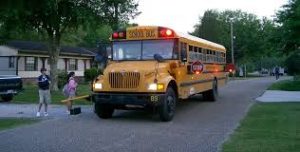 According to
According to 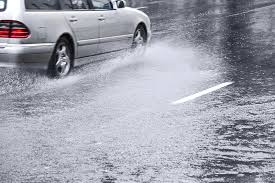 Sliding out or hydroplaning in the rain, is a term that describes cars losing traction with the ground. A car generally loses traction to the ground in wet weather where the car is driving too fast for conditions and there is too much water on the ground.
Sliding out or hydroplaning in the rain, is a term that describes cars losing traction with the ground. A car generally loses traction to the ground in wet weather where the car is driving too fast for conditions and there is too much water on the ground.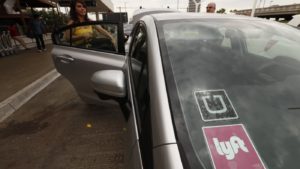 It is actually illegal for Uber and Lyft drivers to put on their hazard lights and stop in the middle of the road to allow passengers in or out of their car. This requires a fine and is a moving violation not a parking violation.
It is actually illegal for Uber and Lyft drivers to put on their hazard lights and stop in the middle of the road to allow passengers in or out of their car. This requires a fine and is a moving violation not a parking violation. You can get a ticket for a secondary offense called dangerously distracted driving if you are doing any activity not related to driving that in the officer’s view interferes with driving safely, which includes smoking a cigarette. If an officer sees you make an illegal lane change, drive in an erratic manner, speed, run a stop sign, cause a car accident, fail to yield to a pedestrian, run a red light, or commit any other traffic stop worthy offense, you can be ticketed for an additional penalty if you were smoking a cigarette and the officer believes this contributed to your distraction.
You can get a ticket for a secondary offense called dangerously distracted driving if you are doing any activity not related to driving that in the officer’s view interferes with driving safely, which includes smoking a cigarette. If an officer sees you make an illegal lane change, drive in an erratic manner, speed, run a stop sign, cause a car accident, fail to yield to a pedestrian, run a red light, or commit any other traffic stop worthy offense, you can be ticketed for an additional penalty if you were smoking a cigarette and the officer believes this contributed to your distraction. Car accident injuries have a tendency to primarily injure the spine and neck regions of a person, among other injuries. Of course you can injure other areas of your body in a car accident but almost all car accident will cause injury to the spine and neck as well. This is because seats and safety restraints in average cars do a good job of sitting you up right but do not fully restrain you into the seat during a jolting car accident. This is why you see people in Nascar who are securely restrained to the seat suffer far less injuries to themselves than the same type of impact to a normal car.
Car accident injuries have a tendency to primarily injure the spine and neck regions of a person, among other injuries. Of course you can injure other areas of your body in a car accident but almost all car accident will cause injury to the spine and neck as well. This is because seats and safety restraints in average cars do a good job of sitting you up right but do not fully restrain you into the seat during a jolting car accident. This is why you see people in Nascar who are securely restrained to the seat suffer far less injuries to themselves than the same type of impact to a normal car.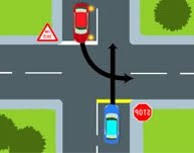 At a four way stop if this had occurred, you would have the right of way because you were first in time. However, this is different as you are planning on turning left and they are going straight in a two way stop. In this situation, it would appear that you must give way to the person going straight across the intersection.
At a four way stop if this had occurred, you would have the right of way because you were first in time. However, this is different as you are planning on turning left and they are going straight in a two way stop. In this situation, it would appear that you must give way to the person going straight across the intersection. I tried researching what you are supposed to do when an ambulance is driving behind you on the freeway and Washington State laws surrounding this instance. I couldn’t find anything that differentiated a local street from a highway or freeway. Therefore, the law applies to all situations. Therefore, even if you are on the freeway, you are supposed to pull over to the far right hand side of the road and stop your car until the ambulance passes.
I tried researching what you are supposed to do when an ambulance is driving behind you on the freeway and Washington State laws surrounding this instance. I couldn’t find anything that differentiated a local street from a highway or freeway. Therefore, the law applies to all situations. Therefore, even if you are on the freeway, you are supposed to pull over to the far right hand side of the road and stop your car until the ambulance passes.